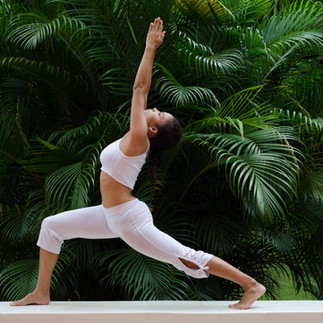Yoga vs Pilates: Choosing the Right Practice for Your Lifestyle
- Michelle Wong

- Jan 23
- 2 min read
Understanding the Differences Between Yoga and Pilates
While yoga and Pilates are often mentioned in the same breath, they are fundamentally different disciplines with unique philosophies, movements, and benefits.
Yoga is an ancient practice rooted in spiritual and meditative traditions. It focuses on breath control, flexibility, and mind-body awareness. The practice includes various postures (asanas), breathing techniques (pranayama), and meditation.
Pilates, on the other hand, is a modern exercise system developed by Joseph Pilates in the early 20th century. It primarily targets core strength, stability, and controlled movements, aiming to enhance muscular endurance and postural alignment.
Different Types of Yoga
Yoga offers several styles that cater to different fitness levels and goals:
Hatha Yoga: A gentle introduction focusing on foundational poses and breathwork.
Vinyasa Yoga: A dynamic, flow-based practice that links movement with breath.
Ashtanga Yoga: A rigorous, structured sequence of poses performed in a set order.
Bikram Yoga: Conducted in a heated room with a series of 26 fixed poses.
Yin Yoga: Slow-paced with deep stretches held for longer durations to improve flexibility and release tension.
Matwork vs Reformer Pilates
Pilates also offers two main variations, each with distinct benefits:
Matwork Pilates: Utilises bodyweight exercises performed on a mat, focusing on core engagement and overall strength.
Reformer Pilates: Performed using specialised equipment with springs and pulleys to provide resistance, offering greater versatility and targeted muscle engagement.
When choosing between matwork and reformer Pilates, consider factors such as accessibility, cost, and personal fitness goals.
Common and Unique Benefits of Yoga and Pilates
Common Benefits:
Improved flexibility and mobility
Enhanced core strength and posture
Better mental focus and stress relief
Unique Benefits of Yoga:
Greater emphasis on mindfulness and emotional well-being
Improved balance and deep muscle activation
Holistic approach to overall wellness
Unique Benefits of Pilates:
Focused strengthening of core muscles
Enhanced body control and precision
Rehabilitation support for injury prevention and recovery
How to Choose Between Yoga and Pilates
If you have limited time and must choose one practice, consider the following:
Choose Yoga if: You seek stress relief, mindfulness, and flexibility enhancement.
Choose Pilates if: Your focus is on core strength, posture improvement, and controlled movement.
Recommended Frequency for Optimal Impact
For those with limited time, the following guidelines can help maximise benefits:
Yoga: 2-3 sessions per week for flexibility, relaxation, and stress relief.
Pilates: 2-3 sessions per week to build core strength and improve posture.
Combination Approach: If time allows, alternating between both practices can provide a well-rounded fitness routine.
Important Considerations
Individuals with underlying health conditions should consult a healthcare provider before beginning either practice. Specific considerations include:
Yoga: Certain poses may be contraindicated for those with high blood pressure, osteoporosis, or joint issues.
Pilates: Individuals with spinal conditions or recent injuries should seek professional guidance to avoid strain.
Conclusion
Both yoga and Pilates offer incredible benefits that can enhance physical and mental well-being. By understanding their differences and aligning your choice with your personal goals and lifestyle, you can seamlessly integrate the practice that best suits you. Whether you seek the meditative calm of yoga or the core-strengthening focus of Pilates, committing to regular practice can lead to lasting positive changes.
















Comments